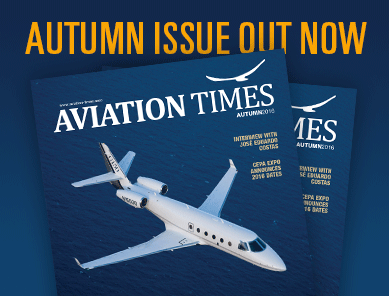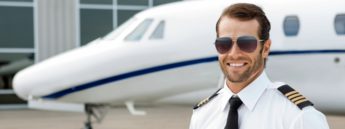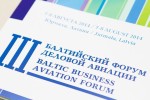A slow-down in growth as a way to solve HR problems in Russian aviation Share
 In 2013 Russian airlines carried almost 85 million passengers (14% more than the year before), making it the fourth year of the two-digit traffic growth in a row. The results of March 2014, however, were much more disappointing as the traffic rose only 2.5%, compared to a 26% increase of the same period last year. While such a significant change might become a headache for many regional industry players, it may in fact spell good news with regard to HR-related troubles in the country.
In 2013 Russian airlines carried almost 85 million passengers (14% more than the year before), making it the fourth year of the two-digit traffic growth in a row. The results of March 2014, however, were much more disappointing as the traffic rose only 2.5%, compared to a 26% increase of the same period last year. While such a significant change might become a headache for many regional industry players, it may in fact spell good news with regard to HR-related troubles in the country.
According to some forecasts, in 2012 the growth of demand for air travel in Russia had to remain within 6%, with a drop to 3% in 2013. In reality, Russian carriers recorded a traffic growth of up to 15% during the period. However, the beginning of 2014 was entirely different.
Recently, the Russian Federal Air Transport Agency has issued a report on the performance of the Russian civil aviation for January-March 2014, which showed the regional traffic growth of 6.7%. It is a huge decline compared to the same period in 2013 (22%). Despite the fact that it is still too early to be drawing any conclusions, the figures still present some food for thought.
“One of the possible reasons of such a drop in demand is the reduction of the international tourist activity in Russia due to global political tensions. It is important to notice that the load factor fell only by as little as 1.5% (to 76%), which suggests that the witnessed growth in demand was fuelled by the increasing activity of the existing passengers, but not by the growth of the passenger numbers. If this is true, it may involve fargoing implications, especially with regard to the justification of the current industry-wide aircraft acquiring frenzy,” comments Skaiste Knyzaite, the CEO of AviationCV.com
Some of the regional specialists assume that the overall growth of demand in Russia has been actually affected by such secondary factors as the process of attracting passengers from railroad services or the positive effect of governmental subsidies. However, since these factors are temporary, it is no surprise that their effect can come to an end leading to a substantial decrease in air travel demand.
If the aforementioned assumptions are true, Russian carriers might find themselves being unprepared for the upcoming change, as recently they have been increasingly expanding their fleet by adding new aircraft and raising their capacity by about 10% in 2013. If the demand continues to drop, many industry players are likely to find themselves in the situation of overcapacity, leading to damping and worsening of the carriers’ financial results. Nevertheless, the situation might have some positive sides as well, as it may put some pressure off the industry as concerns the personnel-related issues.
“The possible drop in demand for air travel might put the expansion plans of local carriers on hold, and thus provide a much-needed break for the industry players as concerns many pressing HR issues. However, the demand for experienced pilots and engineers capable of conducting work on Western-built aircraft is still strong within the region. At the same time, the recent uncertainties regarding the future demand suggest the potential difficulty in justifying long-term investments at the moment. With this in mind, short-term leases of pilots as well as maintenance personnel may represent an ideal solution when dealing with heightened demand for air travel and line maintenance support during the high season. At the same time, it may provide regional carriers with the much needed space to plan their budgets more carefully and thus be prepared for the possible reduction in the workload without being burdened by the long-term obligations,” shares Skaiste Knyzaite, the CEO of AviationCV.com
Source: AviationCV
Share the post "A slow-down in growth as a way to solve HR problems in Russian aviation Share"
Publishing or copying the content of AVIATION Times without a written electronic permission is strictly forbidden. If you have any information, tips, videos, photos or your press releases for us contact us at news@aviation-times.aero.
AVIATION TIMES © Copyright 2012 - 2025







